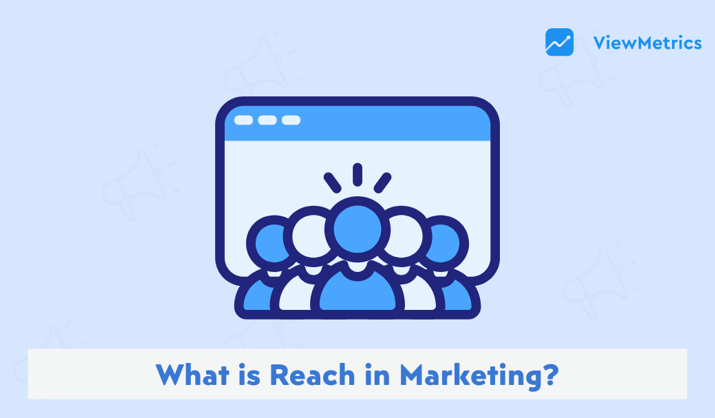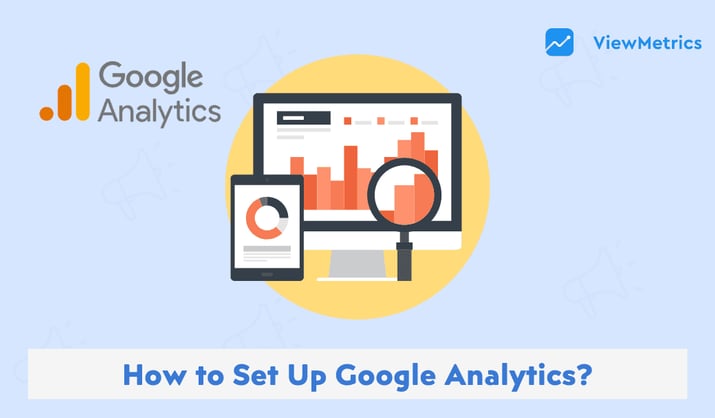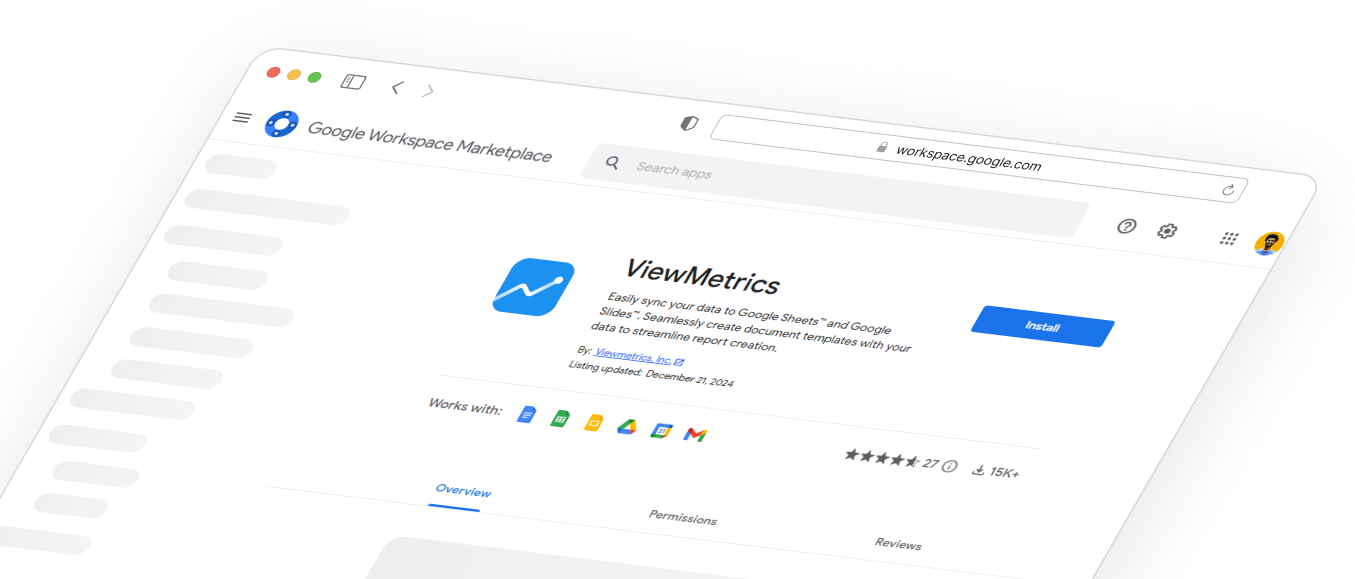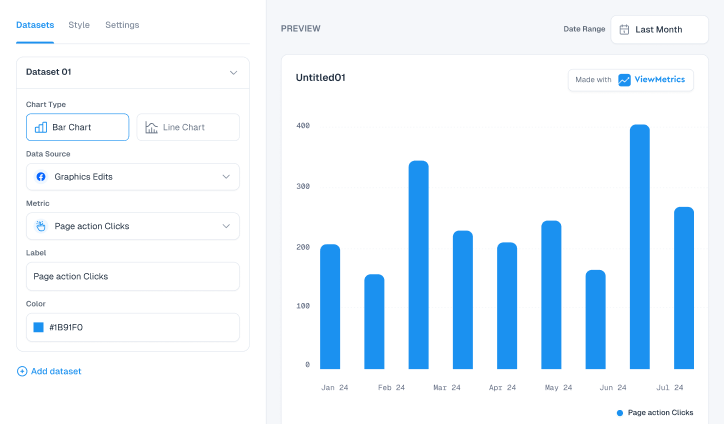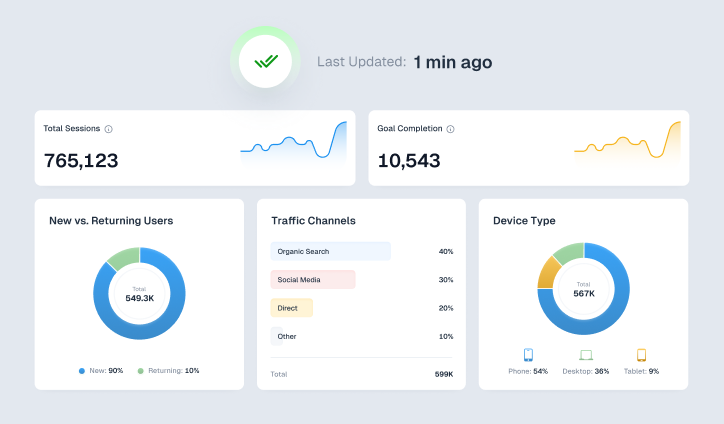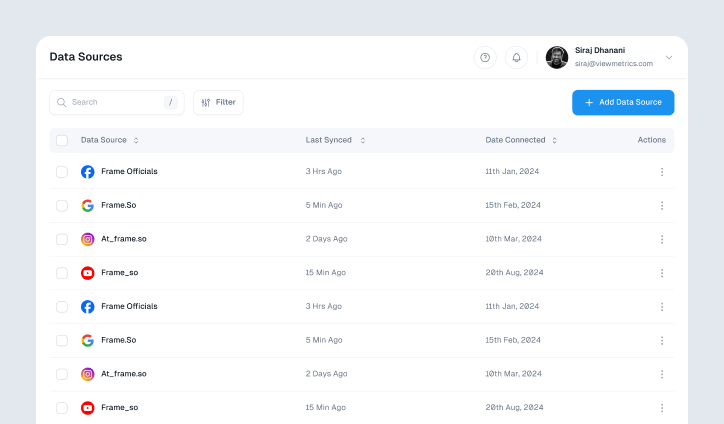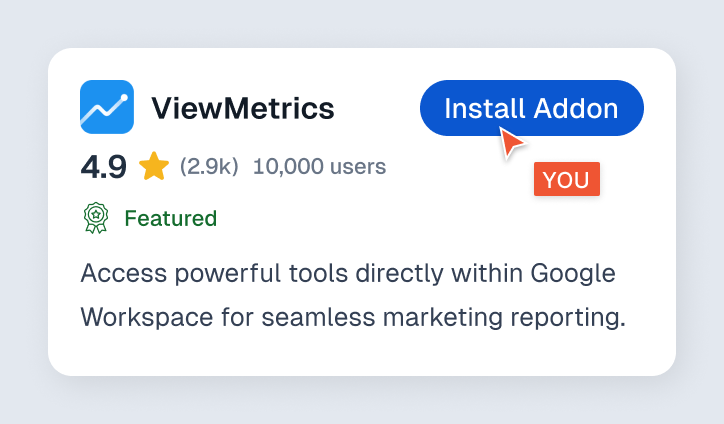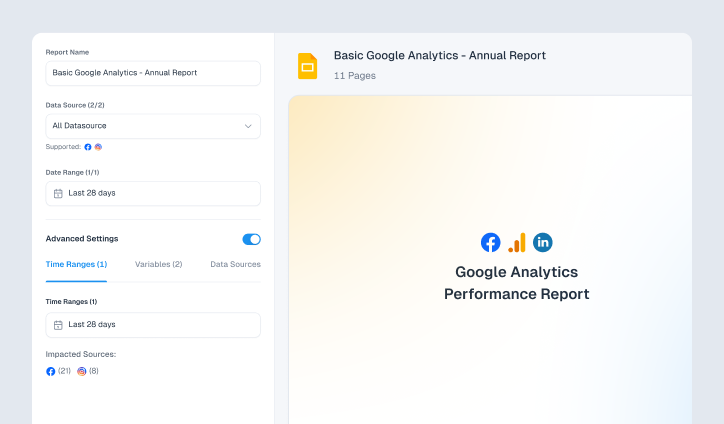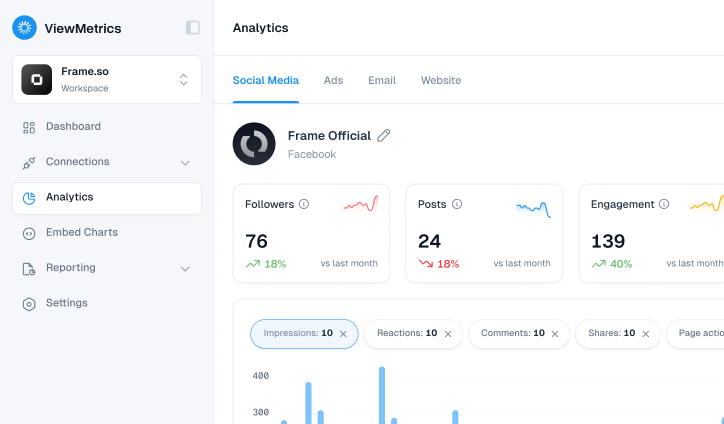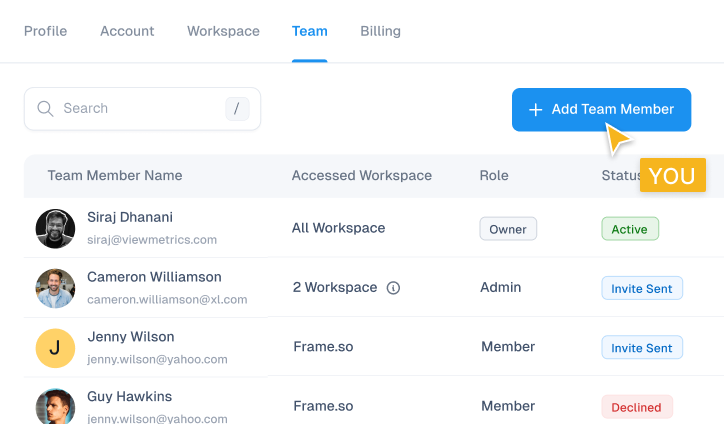Summary for the Blog
- Content marketing analytics is the process of collecting and analyzing data to evaluate the performance of your content strategy. It helps you refine your approach based on what works.
- The primary goal is to track and improve your content’s effectiveness, see what resonates with your audience, and boost your return on investment (ROI).
- The blog post outlines key performance indicators (KPIs) for different content types, including blog posts, videos, social media content, and newsletters.
- It highlights the importance of analyzing metrics like website traffic, conversions, engagement, and reach to see if your content is meeting its goals.
To reach your marketing goals, you need a roadmap that lays out details on what strategies work for you. This is content marketing analytics.
Read this blog to understand the concept of content marketing analytics, the types of content, the importance of tracking content marketing analytics, and the main content marketing KPIs to track for each type.
What is Content Marketing Analytics?
Ever wondered how your competitors are getting the most out of their marketing efforts? How do they identify which content works best for them? This is where they are taking advantage of content marketing analytics.
Consider it as a report card for your online content. It tells you how your content is performing. You can then use this understanding to refine your content marketing strategy.
So, what exactly is content marketing analytics?
Content marketing analytics begins with the first step of collecting important marketing data. After collecting this, analyze it through marketing tools to drive important metrics like how well your content is performing.
Are people reading your blogs? If so, then is your content interesting enough for them to stay on your site? How long are they on your website? Are your posts leading to sales or sign-ups?
To begin content marketing analytics, you need to analyze your content marketing strategies. But what is content marketing and what is included in it?
What is Included in Content Marketing?
Content marketing is like telling stories to connect with your audience. But these aren’t random stories. They are thoughtful and are meant to build trust among your audience and offer them value.
It is never about selling your products or services directly, it’s about slowly building a community where you engage, educate, and entertain. Think of it as planting seeds that grow into loyal customers over time.
Importance of Content Marketing Analytics
Once you come up with a content marketing strategy that works best for you, the question comes up — “is your content doing its job?” This is where the importance of content marketing analytics arises.

-
Tracking your strategy
If you are spending your time and energy on creating content, wouldn’t you want to know if it’s working? Content marketing analytics gives you the power to track important metrics like website traffic, engagement rate, and conversions.
For example, say you came up with a social media campaign that was meant to boost the sales on your website. How would you know this campaign worked well enough to hit your target? Simple, you track! You will check how many visited your website through your campaign posts and from them, did they even convert. Without this information, you are shooting in the dark.
-
Improving your strategy
Analytics is a treasure map for better results. Let’s say one blog post is getting tons of love while another is barely noticed. That’s a clue! Content marketing analytics helps you see what works well with your audience so you can do more of that and less of the “meh” stuff.
Once you are aware of what works and what doesn’t, you can alter your strategy. Over time, this means your content will hit the mark more often, leading to more leads, higher engagement, and better ROI.
Also Read – Customer Journey Analytics
What are the Different Types of Content?
Content marketing is a mix of different types of content that work together to create a solid strategy. Here’s a breakdown of everything included:
Blog Posts
It is informational and solves the queries of your audience. Blog posts are also great for your SEO strategies, helping your website rank better on the search engines.
Videos
Video content takes the cake when it comes to engaging your audience and building connections. People like videos where you show them raw and authentic behind-the-scenes or some informational tutorials. 91% of businesses are already using video content to their advantage! (Don’t sleep on it)
Social Media Content
Reels, tweets, static posts—think about anything that can spark conversation with your audience and you get the best type of social media content for your business!
Newsletters
People who have already purchased from you may want to know what else you have in store. Newsletters are best to connect and update them with all your latest launches and deals.
Also Read: Newsletter Ideas to Keep Your Subscribers Engaged
Content Marketing KPIs for Each Type of Content
The content marketing KPIs differ based on the content type. Here are some main KPIs to track for different types of content:

Blog Metrics
- Blog Visits: It is for the number of times people visit your blog, showing the reach of your content.
- Top Posts: These are the blog posts that get the most views. This identifies which topics your audience loves to read.
- Social Shares: The more social shares, the better connection you are building with your audience.
- Comments: Comments show that readers are interested in interacting with your content.
- Top Converting Pages: You need to understand which blog post is driving conversion for your business.
- Average Inbound Post Links: This measures how often other websites link to your posts. It improves SEO and increases website traffic.
Video Content Metrics
- Views: Video views tell you how many times your video was watched, helping you measure the reach.
- Watch Time: How long did they watch your video? The longer the watch time, the more engaging your video is.
- Engagement: This includes likes, comments, and shares. This shows people are not just watching but interacting with your content.
- Social Shares: Are viewers sharing your video with others? Shares mean your content is creating an impact.
- Conversions: Are viewers taking action after watching your video? Maybe they’re signing up or making a purchase?
- Clicks and Click-Through Rates: This is helpful when your videos have links. It shows how effective your call-to-action is.
Social Media Metrics
- Impressions: How many times has your post been displayed on the viewer’s feed?
- Reach: How many people have actually watched your content when presented on their feed?
- Likes: This shows how people feel about your content.
- Comments: With comments, your audience is actively interacting and sharing their thoughts.
- Shares: Sharing content is a strong sign people find it valuable.
- Saves: When someone saves your post, they want to refer to it later. This means your content is of long-term value.
- Average Engagement Rate: The likes, comments, shares, and saves are divided by your total followers. It helps you understand how much interaction you get compared to how many people see your content.
Also Read: Essential Social Media KPIs to Track
Newsletter Metrics
- Open Rate: A higher open rate means your subject lines are working and your email subscribers are opening your newsletters.
- Unique Click-Through Rate (CTR): When people click on the links in your email, it shows how effective your content and calls to action are.
- List Growth Rate: With a high list growth rate, you’re reaching more people.
- Conversion Rate: The conversion rate shows how many people take action after opening the links in your newsletters.
- Bounce Rate: It is the percentage of emails that didn’t get delivered. Improve your email listing if you have a high bounce rate.
- Email Sharing: Shows how many subscribers shared your email with others.
- Unsubscribe Rate: This shows how many people unsubscribed, meaning your content is not relevant or you’re sending emails too often.
Also Read: Important Email Marketing KPIs to Track
Simplify Your Content Marketing Analytics with ViewMetrics!
Tracking your content performance is important for understanding where to drive your marketing efforts. But tracking it on different platforms for all the different types of content can be difficult. Let ViewMetrics share your load!
ViewMetrics integrates with different platforms to provide your key content marketing analytics. You can track video content performance on YouTube. Connect it with your social media platforms like Instagram, Facebook, Twitter, and LinkedIn. If you want to analyze your email marketing efforts, ViewMetrics can also connect with Constant Contact, ActiveCampaign, Mailchimp, and HubSpot.
View All Your Marketing and Website Data — Instantly
Connect Instagram, Mailchimp, Google Analytics & more
Pre-built dashboards, no setup needed
Save hours on reporting every week
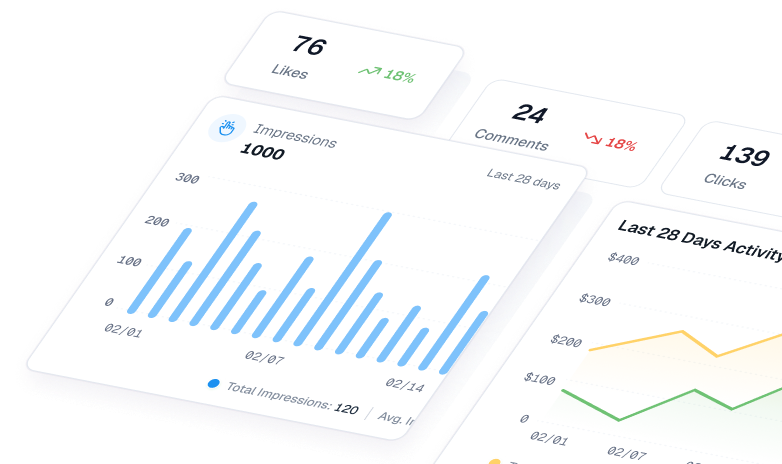
Frequently Asked Questions
What are the different types of content?
Different types of content work together to create a successful content marketing strategy. The main types of content include:
- Blogs
- Social Media Content
- Videos
- Ebooks
- Newsletters
- Podcasts
- Infographics
- Case studies
- Courses
- User Generated Content
What is content marketing analytics?
Content marketing analysis is the collection of marketing data, its interpretation, and its usage to improve your content marketing efforts.
Why is content marketing analytics important?
With content marketing analytics, track and analyze your marketing data to understand what works. You can focus on the good parts and not burn your time, effort, and money.
Which tools to use for content marketing analytics?
You can use tools like ViewMetrics, Google Analytics, Semrush, and HubSpot for content marketing analysis.



